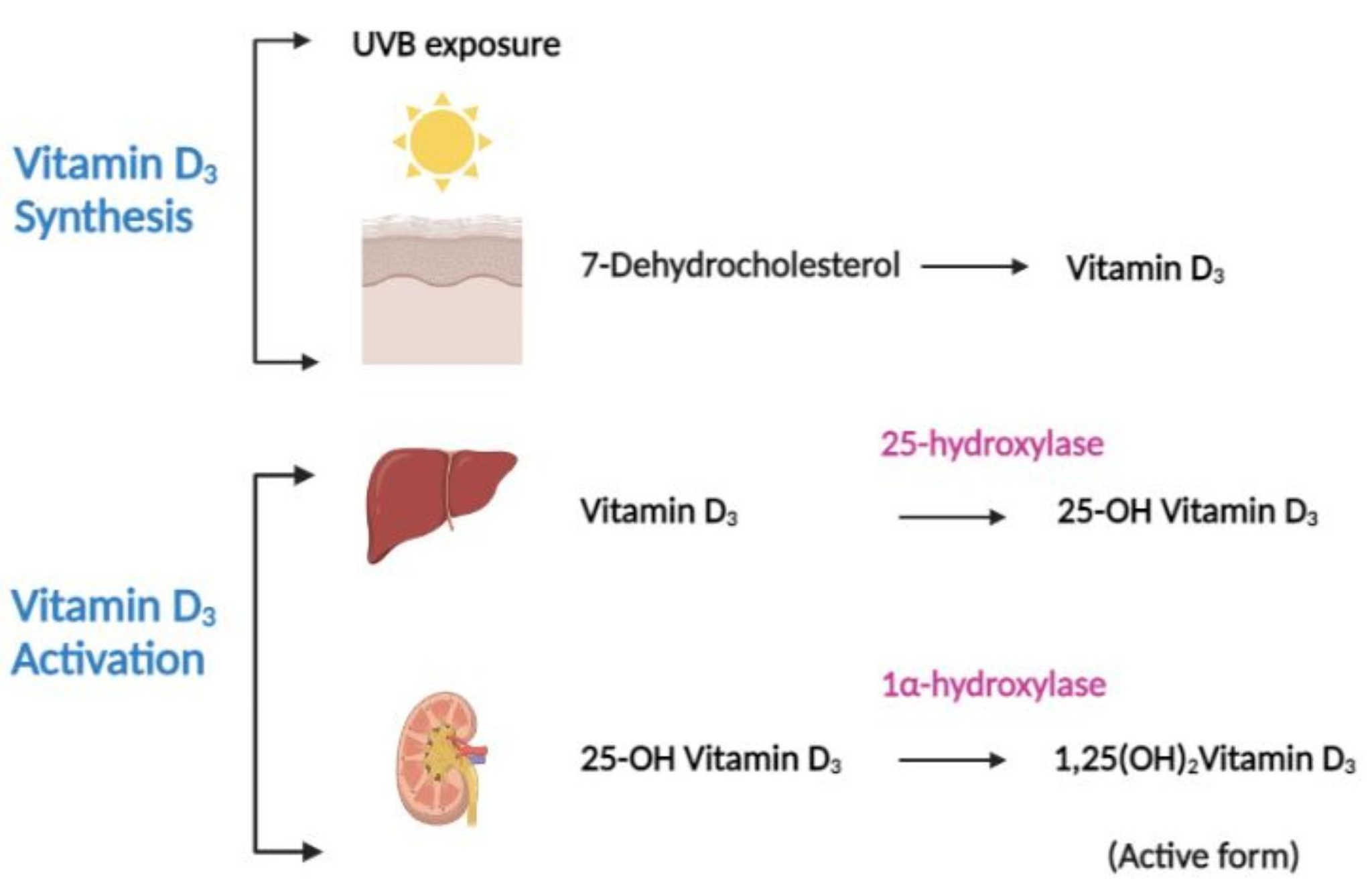Vitamin D Activation and Function: Does D Do Dat? =D
Vitamin D is necessary for calcium and phosphorus homeostasis, which is important because of the connection of the levels of these minerals to bone health. Dietary requirements vary, as vitamin D can also be synthesized in the body.
Ultraviolet light catalyzes the conversion of 7-dehydrocholesterol to cholecalciferol. This is converted to calcidiol in the liver, and later to calcitriol (active D3) in the kidneys.
Active D3 increases intestinal Ca and PO4 3- absorption. Because of vitamin D's effects on the blood concentration of Ca, this vitamin interacts with the parathyroid hormone/calcitonin axis to exert different kinds of control on blood Ca levels. Vitamin D's effects on intestinal absorption provide a long-term mechanism, while the hormone interactions provide short-term regulation. PTH also stimulates vitamin D activation. So, the short-term mechanism can effectively activate the long-term one.
Important note: PTH causes Ca absorption and PO4 3- excretion. Vitamin D causes absorption of both. Interestingly, PTH stimulates vitamin D activation.
Ca and P are important for various bodily functions. As such, regulation is very important.
https://www.hsph.harvard.edu/nutritionsource/vitamin-d/ - Overview of vitamin D functions, sources, and deficiency/excess symptoms + associated disorders.
https://www.ncbi.nlm.nih.gov/pmc/articles/PMC4151027/ - Additional hypothesized functions of vitamin D in the body.
